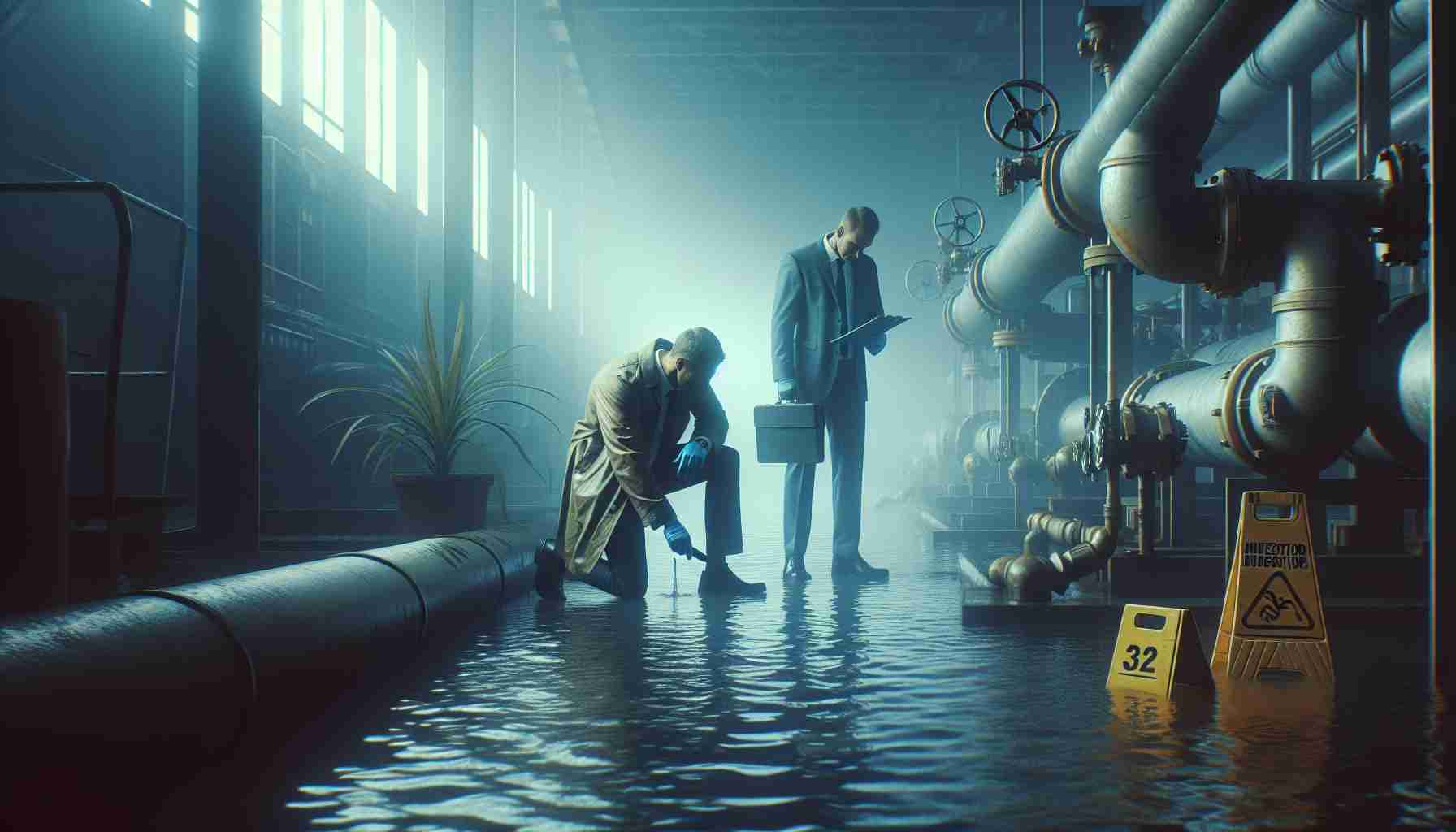
Investigation Unveils Intriguing Intruder at Waterway Control Facilities
A mysterious perpetrator infiltrated multiple vital structures in the coastal water management region, posing a threat of significant inundation.
On a summer day, reports surfaced regarding the nefarious deeds committed within the confines of the waterway control buildings under the jurisdiction of the ‘Blankenberge New Polder.’ Rampant sabotage activities were discovered, including the deliberate manipulation of crucial water gates and sluices, potentially leading to catastrophic flooding in the Zeebrugge-Bredene-Bruges area.
Upon scrutiny, a former sluice operator emerged as the prime suspect, with his whereabouts pinpointed at various key locations through surveillance technology. However, despite persuasive evidence linking him to the scenes of havoc, the accused remained steadfast in denying any involvement in the disruptive acts.
In a peculiar turn of events, the judicial verdict absolved the individual of certain grave charges, raising doubts about the extent of his culpability in the overarching scheme of endangering the regional water infrastructures. Yet, a solemn pronouncement of guilt was pronounced for the unauthorized entry and door destruction, resulting in a conditional prison sentence and financial compensations to the affected party.
As the legal saga unfolds, conflicting perspectives from legal representatives underscore the contentious nature of the case, with one side lamenting the lenient sentencing and the other poised for a potential appeal to contest the judicial decision. In the midst of uncertainty and discord, the enigma surrounding the enigmatic intruder at the heart of the waterway turmoil persists, shrouded in ambiguity and unresolved suspicions.
An Investigation’s Revelation: Unraveling the Intruder’s Legacy on Waterway Control Facilities
In the wake of the recent revelations surrounding the infiltration of critical water management infrastructure, new details have emerged shedding light on the enigmatic figure at the center of this perplexing saga. As the investigation delves deeper into the motives and actions of the intruder, a myriad of questions arises that demand answers in order to understand the full scope of the incident.
Key Questions:
1. What Was the Intruder’s Motive?
– Uncovering the underlying reasons behind the intruder’s targeted actions is crucial to comprehending the potential risks posed to the waterway control facilities.
2. Were There Any Accomplices?
– Exploring the possibility of collaborators or conspirators in the intrusion could illuminate a larger network involved in the sabotage activities.
3. How Was the Intruder Able to Evade Detection?
– Assessing the security lapses that allowed the intruder to navigate through the key locations and manipulate vital components is essential for enhancing safeguard measures.
Key Challenges and Controversies:
One of the primary challenges associated with this case is the complexity of untangling the motives behind the intruder’s actions and establishing a clear narrative of events. The conflicting accounts and ambiguous evidence present a formidable obstacle to reaching a conclusive resolution.
Furthermore, the controversy surrounding the judicial verdict, which absolved the suspect of certain grave charges while holding them accountable for unauthorized entry and door destruction, underscores the nuanced legal intricacies of the case. The decision to impose a conditional prison sentence and financial compensations raises debates over the adequacy of the punishment in relation to the potential repercussions of the intrusion.
Advantages and Disadvantages:
Advantages:
– Increased awareness of vulnerabilities in water infrastructure security.
– Enhanced scrutiny and reinforcement of surveillance technologies to prevent future intrusions.
– Opportunities for collaborative efforts among stakeholders to bolster defenses against malicious activities.
Disadvantages:
– Erosion of public trust in the reliability of water management systems.
– Potential disruptions to critical operations and services due to heightened security measures.
– Long-term legal implications and financial burdens resulting from the aftermath of the intrusion.
In navigating the complexities of this investigation, a comprehensive approach that addresses the multifaceted aspects of the case is essential to ensure accountability, transparency, and resilience in safeguarding vital waterway control facilities.
Suggested related link: Water Management Authority
















